Suspended Guitar Chords - How To Spice Up Your Acoustic Guitar Chord Progressions
Are your acoustic guitar chord progressions sounding plain and predictable to you? Learning some suspended guitar chord shapes, and then learning how to apply these, can really lift your playing to a whole new level.
Today I would like to share with you some cool ways to including some suspended chords into the progressions you play on your guitar.
First, a little about chord suspension . . . . .
A chord becomes “suspended” when the 3rd is replaced with either the 2nd note of the key or the 4th note of the key that the chord belongs to. If it is the 2nd note then it is called a suspended 2 chord or “sus2”, and if it is the 4th note it is a suspended 4 or “sus4” chord.
The great thing is that there are all sorts of possibilities when it comes to suspended chords on the guitar. The term suspended is used because it sounds like the chord is hanging in the air or “suspended”, waiting to be resolved.
If you don’t fully understand this explanation of chord suspension, don’t worry, you will still be able to use them just as effectively within your chord progressions.
Common Suspended Chords On The Guitar
Below are some common suspended chords that we are going to apply to our chord progression.
Notice that we are only adding or taking away a note from the original major shape. It’s not much but it makes all the difference. To be able to play the Gsus2 shape, I have omitted the 2nd finger from the 2nd fret on the 5th string. You will need this finger to play the 2nd fret on the 3rd string.
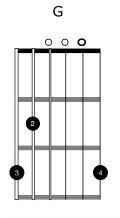
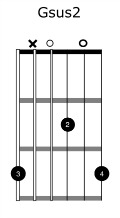
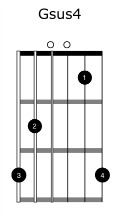
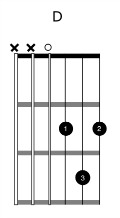

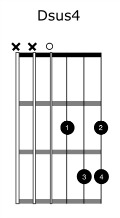

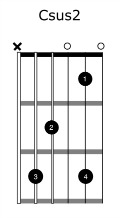

Now check out this typical chord progression:

This sounds ok, but we can have it sound much better by suspending some of the chords.
Consider this:
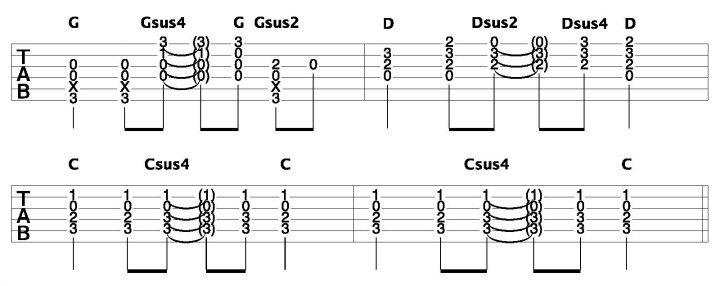
Notice that by suspending the chords, we create movement within the chord voicing’s themselves, and the overall progression.
Doing this will have the progressions you play on your guitar sound much more interesting to both yourself and the listener. The suspended notes in the chords create a counter melody within your progression and can often compliment the melody that is happening in the song at the time.
More Elaborate Suspended Chord Progression
No need to stop there though. You can create more elaborate suspended chord progressions by incorporating other techniques, such as breaking the chords up with a combination of strumming and picking.
So you might end up with something like this:
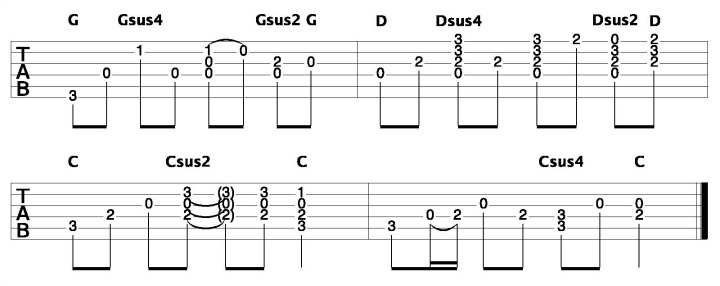
While the above chord progression may sound quite complex to you, it is really just two simple ideas integrated together. We have chords that are broken up with picking and strumming, and we have chords that are being suspended.
Complex ideas are really just the combination of several simple ideas. When you think of it like this, it’s easier to break down these ideas and get them into your guitar playing sooner.
You should now go and experiment with the chord progressions that you know on your guitar, and start including some chord suspension. Look out for it in the songs that you know and learn in the future too.
Here are some examples of songs that use some suspended chords for you to check out:
- Crazy Little Thing Called Love by Queen (Use of D suspended chord in the intro and verse)
- Patience by Guns N’ Roses (Use of C, G, A, and D suspended chords throughout song)
- A Hard Days Night by The Beatles (Famous opening chord is a G7 suspended chord)
Want to get started fingerpicking guitar without the frustration? Check out these online lessons for fingerpicking guitar